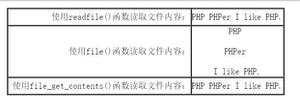解析XML文件,并抢值
XML文件是这样的:解析XML文件,并抢值
<?xml version="1.0"?> <catalog>
<book id="bk101">
<author>Gambardella, Matthew</author>
<title>XML Developer's Guide</title>
<genre>Computer</genre>
<price>44.95</price>
<publish_date>2000-10-01</publish_date>
<description>An in-depth look at creating applications with XML.</description>
</book>
<book id="bk102">
<author>Ralls, Kim</author>
<title>Midnight Rain</title>
<genre>Fantasy</genre>
<price>5.95</price>
<publish_date>2000-12-16</publish_date>
<description>A former architect battles corporate zombies, an evil sorceress, and her own childhood to become queen of the world.</description>
</book>
</catalog>
我需要的所有数据读取我的课:
public class Book {
public string Id { get; set; }
public string Author { get; set; }
public string Title { get; set; }
public Genre Genre { get; set; }
public decimal Price { get; set; }
public DateTime PublishDate { get; set; }
public string Description { get; set; }
}
下面的代码不工作,我可以从节点抓取bookId,但不能标题,作者.. 如何实现该结果?这是我到目前为止有:
const string filePath = @"C:\Users\Michał\Desktop\books.xml"; XDocument xmlDoc = XDocument.Load(filePath);
var dupa = xmlDoc
.Descendants("book")
.Select(x => new Book()
{
Id = (string) x.Attribute("bookid"),
Title = (string) x.Attribute("title") // Title is empty after that code runs
}).ToList();
回答:
id是<book>的attribute但其他节点是孩子XML elements所以你需要使用XContainer.Element(XName name)访问它们:
var dupa = xmlDoc .Descendants("book")
.Select(x => new Book
{
Id = (string)x.Attribute("bookid"),
Author = (string)x.Element("author"),
Title = (string)x.Element("title"),
Genre = (Genre)Enum.Parse(typeof(Genre), (string)x.Element("genre")),
Price = (decimal)x.Element("price"),
PublishDate = (DateTime)x.Element("publish_date"),
Description = (string)x.Element("description"),
}).ToList();
在这里,我假设Genre是一个枚举类似于:
public enum Genre {
Computer,
Fantasy,
};
样例fiddle #1。
或者,您可以创建一个包含您的书籍列表中Catalog类型,与attributes that control XML serialization注释,并Book,并使用XmlSerializer反序列化的一切。
定义你的类型,像这样:
[XmlRoot(ElementName = "book")] public class Book
{
[XmlElement(ElementName = "author")]
public string Author { get; set; }
[XmlElement(ElementName = "title")]
public string Title { get; set; }
[XmlElement(ElementName = "genre")]
public Genre Genre { get; set; }
[XmlElement(ElementName = "price")]
public decimal Price { get; set; }
[XmlElement(ElementName = "publish_date")]
public string PublishDate { get; set; }
[XmlElement(ElementName = "description")]
public string Description { get; set; }
[XmlAttribute(AttributeName = "id")]
public string Id { get; set; }
}
[XmlRoot(ElementName = "catalog")]
public class Catalog
{
[XmlElement(ElementName = "book")]
public List<Book> Books { get; set; }
}
public enum Genre
{
Computer,
Fantasy,
};
然后反序列化如下:
List<Book> dupa; using (var reader = XmlReader.Create(filePath))
{
var serializer = new XmlSerializer(typeof(Catalog));
dupa = ((Catalog)serializer.Deserialize(reader)).Books;
}
样品fiddle #2。
注:
考虑从
enum改变Genre到string。使用当前的模型,如果新的流派稍后添加到XML中,反序列化将失败。有多种工具可以自动生成与
XmlSerializer兼容的XML类型。我使用http://xmltocsharp.azurewebsites.net/,然后根据需要修改属性名称和类型。另一种选择是xsd.exe。欲了解更多信息,请参阅Generate C# class from XML。
以上是 解析XML文件,并抢值 的全部内容, 来源链接: utcz.com/qa/258062.html





